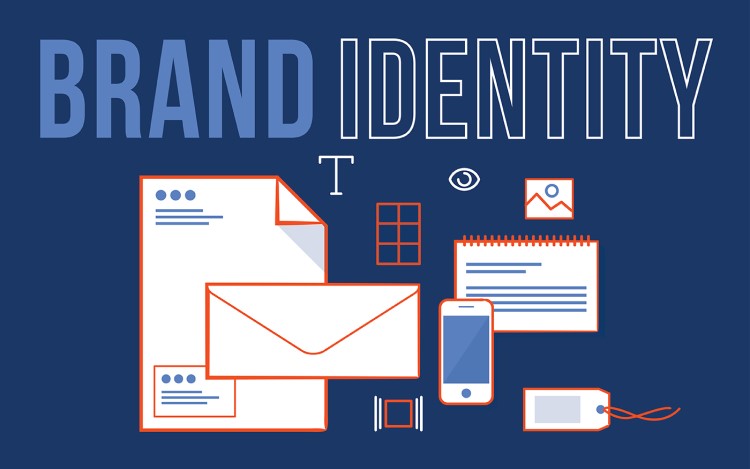
Building a brand identity is essential for any business aiming to establish a lasting presence in a competitive market. A company’s brand identity includes values, personality, and reputation, extending far beyond just its logo or color scheme. From small startups to global corporations, building a brand identity helps establish customer trust and drive loyalty. A well-defined brand identity also differentiates businesses from competitors, making them stand out in the market. As companies grow, a consistent brand identity ensures cohesive messaging and strengthens connections with target audiences.
The Importance of Brand Identity
A strong brand identity sets the tone for how customers perceive a business. By building a brand identity, companies can differentiate themselves from competitors and establish a clear market position. Consumers are more likely to engage with businesses that align with their values and offer a consistent brand experience. This emotional connection translates into customer loyalty and repeat business.
Moreover, brand identity impacts everything from marketing efforts to customer interactions. When businesses invest in building a brand identity, they create a cohesive and recognizable image that resonates with their audience. This also helps with employee engagement, as a clear brand identity often instills a sense of pride and purpose within the company culture. Ultimately, a strong brand serves as a guiding force that influences both internal and external business decisions.
Defining Core Values and Mission
One of the first steps in building a brand identity is defining the core values and mission of the company. These elements serve as the foundation for all branding efforts, guiding how the business presents itself to the world. A well-articulated mission statement provides clarity on the company’s purpose, while core values reflect what the business stands for.
Defining these core elements also helps businesses create a brand personality that resonates with their target audience. For example, a brand with values centered around sustainability might adopt a tone of environmental consciousness and social responsibility in its marketing messages. Conversely, a brand focused on innovation may use dynamic and forward-thinking language. By aligning messaging with values, businesses can build a brand identity that is authentic and memorable.
Visual Identity: More than Just a Logo
While building a brand identity involves much more than visual elements, the visual identity still plays a critical role in how customers perceive the brand. Consistency in design—from logos and color schemes to typography—creates visual recognition that helps establish brand awareness. When customers see familiar design elements, they immediately associate them with the brand, which strengthens brand recall.
Beyond the logo, businesses should also ensure consistency across all visual touchpoints, such as websites, packaging, and advertisements. This ensures that no matter where a customer interacts with the brand, the experience feels cohesive and aligned with the company’s values and identity. Maintaining this visual consistency builds trust, as it reassures customers that the brand is reliable and professional.
Crafting a Compelling Brand Story
Storytelling is a powerful tool for building a brand identity. Crafting a compelling brand story allows businesses to communicate their journey, values, and mission in a way that resonates emotionally with their audience. Consumers today are not just looking for products or services—they are looking for brands they can connect with on a personal level.
A well-crafted brand story answers the questions: Who are we? What do we stand for? Why do we exist? By weaving these elements into a narrative, businesses can humanize their brand and make it relatable to their target audience. Storytelling also provides an opportunity to showcase the brand’s uniqueness, whether it’s through the founder’s journey, company culture, or commitment to certain causes.
The brand story should be reflected in all communications, from website copy to social media posts. The more consistent the story, the easier it is for customers to form a connection with the brand. In turn, this connection fosters loyalty and advocacy, as customers are more likely to support brands that align with their personal beliefs and values.
Consistent Communication Across Channels
Consistency is key when building a brand identity. To create a unified brand experience, businesses must ensure that their messaging remains consistent across all channels. Whether customers interact with the brand on social media, through email campaigns, or in-store, the tone, language, and values conveyed should feel the same.
Inconsistent messaging can create confusion, which can harm the brand’s credibility. For example, if a business markets itself as environmentally conscious but fails to reflect these values in its operations or customer communications, it risks losing trust. Consistent communication reinforces the brand’s identity and ensures that customers know what to expect at every interaction.
Additionally, businesses should maintain a consistent tone of voice. The tone of voice should reflect the brand’s personality and values, whether formal, playful, or conversational. By ensuring that communication aligns with the brand identity, businesses strengthen their overall presence and build a loyal following.
Adapting and Evolving the Brand Identity
While consistency is important, businesses must also be willing to adapt and evolve their brand identity over time. As markets change, customer preferences shift, and industries grow, brands need to stay relevant by updating their identity when necessary. This could involve refreshing the logo, refining messaging, or even rebranding entirely to better align with current trends.
However, businesses should approach any changes to their brand identity thoughtfully. Too many changes can dilute the brand’s message, leading to confusion among customers. By carefully evaluating the reasons for any changes and ensuring they remain aligned with the company’s core values, businesses can evolve their brand identity without losing their essence.
In conclusion, building a brand identity is essential for any business looking to thrive in today’s competitive market. From defining core values to crafting a compelling brand story, every element of brand identity plays a role in how customers perceive and engage with the business. By maintaining consistency across all channels and adapting when necessary, businesses can create a brand that resonates with their target audience, fosters loyalty, and drives long-term success.

